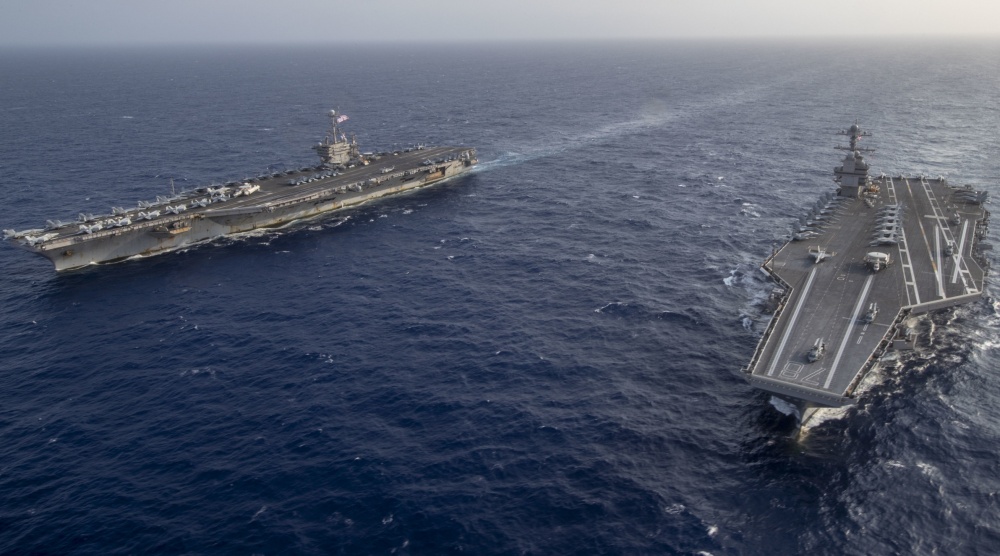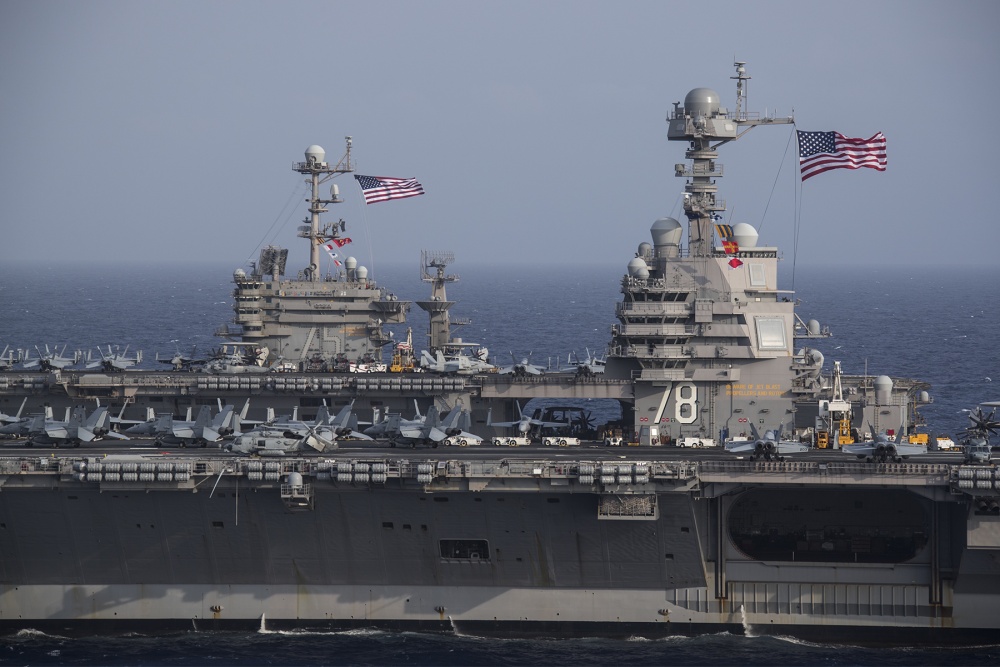Ford is underway conducting integrated air wing operations, and the Harry S. Truman Carrier Strike Group remains at sea in the Atlantic as a certified carrier strike group force ready for tasking in order to protect the crew from the risks posed by COVID-19.
Taken on Jun. 4, 2020, the cool pictures in this post feature the Ford-class aircraft carrier USS Gerald R. Ford (CVN 78) and the Nimitz-class aircraft carrier USS Harry S. Truman (CVN 75) transiting the Atlantic Ocean, marking the first time a Ford-class and a Nimitz-class aircraft carrier operated together underway.

Ford is underway conducting integrated air wing operations, and the Harry S. Truman Carrier Strike Group remains at sea in the Atlantic as a certified carrier strike group force ready for tasking in order to protect the crew from the risks posed by COVID-19, following their successful deployment to the U.S. 5th and 6th Fleet areas of operation.
The U.S. Navy 10 Nimitz-class aircraft carriers, USS Nimitz (CVN 68), USS Dwight D. Eisenhower (CVN 69), USS Carl Vinson (CVN 70), USS Theodore Roosevelt (CVN 71), USS Abraham Lincoln (CVN 72), USS George Washington (CVN 73), USS John C. Stennis (CVN 74), USS Harry S. Truman (CVN 75), USS Ronald Reagan (CVN 76) and USS George H.W. Bush (CVN 77), are the largest warships in the world, each designed for an approximately 50-year service life with just a single mid-life refueling.

The next generation of aircraft carriers, the Gerald R. Ford-class (CVN 78) was ordered in September 2008 as the force structure replacement for USS Enterprise (CVN 65), which was inactivated in 2012.
The Gerald R. Ford class is the future aircraft carrier replacement class for Enterprise and Nimitz-class aircraft carriers. The lead ship, Gerald R. Ford (CVN 78), was commissioned in 2017. The class brings improved warfighting capability, quality of life improvements for our Sailors, and reduced total ownership costs.

The CVN 78 is designed to operate effectively with almost 700 fewer crew members than a CVN 68-class ship (which features 5,000 crew members). Improvements in the ship design will also allow the embarked air wing to operate with fewer personnel. New technologies and ship design features are expected to reduce the watch standing and maintenance workload for the crew. Gerald R. Ford is the first aircraft carrier designed with all electric utilities, eliminating steam service lines from the ship, reducing maintenance requirements, and improving corrosion control. The new A1B reactor, Electromagnetic Aircraft Launch System (EMALS), Advanced Arresting Gear (AAG), and Dual Band Radar (DBR) all offer enhanced capability with reduced manning. The Gerald R. Ford class is designed to maximize the striking power of the embarked carrier air wing. The ship’s systems and configuration are optimized to maximize the sortie generation rate (SGR) of attached strike aircraft, resulting in a 33 percent increase in SGR over the Nimitz- class. The ship’s configuration and electrical generating plant are designed to accommodate new systems, including direct energy weapons, during its 50-year service life.
The typical air wing aboard a U.S. Navy aircraft carrier consists of:
• Four Strike Fighter (VFA) Squadrons, with twelve F/A-18E/F Super Hornets each.
• One Electronic Attack (VAQ) Squadron, made up of five EA-18G Growlers.
• One Carrier Airborne Early Warning (VAW) Squadron, with four E-2C Hawkeyes or five E-2D “Advanced” Hawkeyes.
• One Helicopter Sea Combat (HSC) Squadron of eight MH-60S Seahawks.
• One Helicopter Maritime Strike (HSM) Squadron of eleven MH-60R Seahawks, 3–5 of which are typically based in detachments on other ships of the carrier strike group.
• A Fleet Logistics Support (VRC) Squadron Detachment of two C-2A Greyhounds.
Photo by Mass Communication Specialist Seaman Riley McDowell and Mass Communication Specialist 2nd Class Ruben Reed / US Navy

